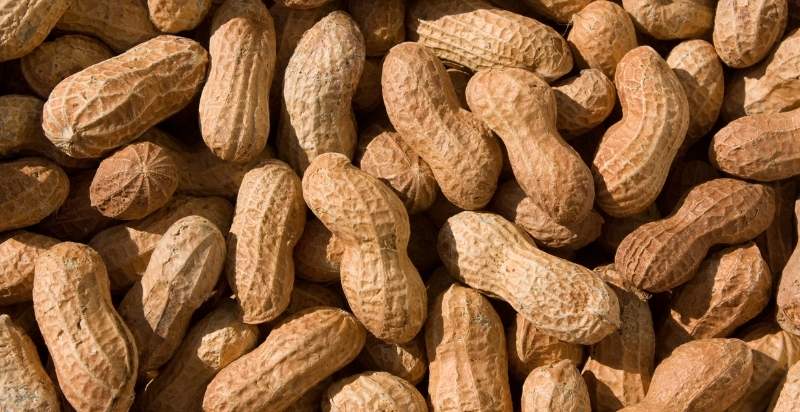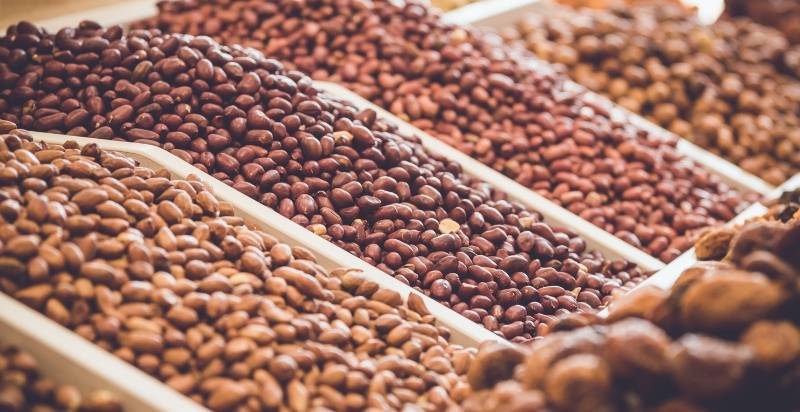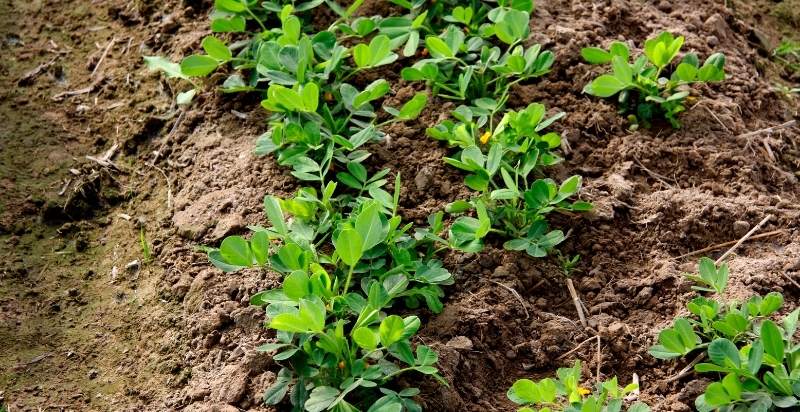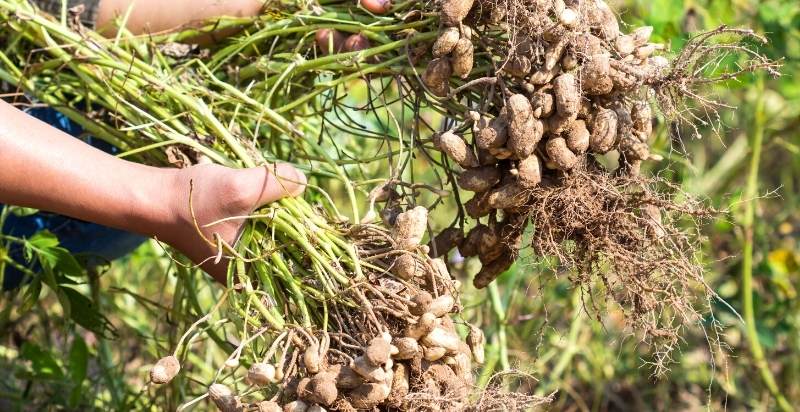Do you love peanut butter? Or maybe you’re more of a fan of roasted peanuts. Either way, you can thank peanuts for your tasty treat. A peanut is not a nut, and it’s a legume, which means it’s related to beans and peas. Peanuts grow in the ground rather than on trees like most nuts, which are often called “groundnuts.”
Peanuts are a good source of protein and essential vitamins and minerals. They’re also a high-fat food, but most healthy, unsaturated fat. Eating peanuts may help reduce the risk of heart disease and other chronic conditions.
This article will provide an overview of how to grow peanuts for fun. We’ll discuss the best time to plant peanuts, how to care for them, and what to do with the harvest.
What are Peanuts?
Peanuts are a type of legume, a plant that produces its fruit in a pod. The peanut plant is annual and completes its life cycle in one growing season. Enslaved Africans, native to South America, were first brought to the United States. Today, peanuts are grown in warm climates all over the world.
The peanut plant has yellow flowers that bloom above the ground and then die. A new flower will then grow from the same spot and undergo the same process. After about 45–60 days, the plant will produce small, green, peg-like structures called peduncles.
These peduncles will grow down into the ground and mature into peanuts. It takes about 120–150 days from planting until the peanuts are ready to harvest.
Peanuts come in two main varieties: runner and Virginia.
- Runner peanuts make up about 80% of the peanuts in the United States. They are mainly used for making peanut butter, as well as for planting.
- Virginia peanuts are giant and have a higher fat content, and they are often dry roasted and used as a snack food.

Peanut Nutritional Facts:
Peanuts are a good source of protein, fiber, vitamins, and minerals. They are also relatively low in calories. One ounce (28 grams) of peanuts contains the following nutrients (1):
- Calories: 166
- Protein: 7 grams
- Fat: 14 grams
- Carbs: 6 grams
- Fiber: 2 grams
- Vitamin E: 25% of the Reference Daily Intake (RDI)
- Manganese: 73% of the RDI
- Copper: 24% of the RDI
- Magnesium: 19% of the RDI
- Selenium: 42% of the RDI
Peanuts are a good source of several vitamins and minerals, including:
Vitamin E: Peanuts are a good source of vitamin E, an important antioxidant that helps protect your cells from damage.
Magnesium: Magnesium is involved in many important processes in the body, including energy production, muscle contraction, and nerve function.
Folate: Folate is a water-soluble vitamin important for cell growth and metabolism, and peanuts are a good source of folate.
Health Benefits Of Peanuts:
Peanuts contain several other important nutrients, including protein, fiber, and healthy fats. Peanuts are relatively high in calories, but they’re also very filling, making them a good snack for people trying to lose weight or maintain weight.
1. Improving heart health
Peanuts are rich in monounsaturated fats, which can help reduce cholesterol levels and improve heart health. Additionally, peanuts contain antioxidants that can help protect the heart from disease.
2. Managing blood sugar levels
Peanuts can help regulate blood sugar levels. Peanuts contain a type of fiber called resistant starch, which can slow the absorption of sugar into the bloodstream. Additionally, peanuts contain a compound called p-coumaric acid, which has improved insulin sensitivity.
3. Reducing the risk of cancer
Peanuts contain several compounds that may help reduce cancer risk, including phenolic acids, phytosterols, and resveratrol. Additionally, peanuts are a good source of vitamin E, an important antioxidant that helps protect cells from damage.
4. Improving brain health
Peanuts are a good source of niacin, a vitamin B important for brain health. Niacin has been linked with a reduced risk of Alzheimer’s disease and other forms of dementia. Additionally, peanuts contain compounds that may help improve cognitive function.
5. Promoting weight loss
Despite their high-calorie content, peanuts can help with weight loss. This is due to their high protein and fiber content, which can help you feel full and reduce your overall calorie intake. Additionally, peanuts contain healthy fats that can help boost metabolism and promote fat burning.
After learning such amazing facts about Peanuts. If you’re interested in growing peanuts at home, here are a few things you should know.
Growing peanuts is relatively easy and can be done in a home garden. Here is everything you need to know about growing peanuts :
Different Varieties Of Peanuts To Grow:
As mentioned, there are two main types of peanuts: runners and Virginias. Within these categories, there are several different varieties that you can grow.
Some popular varieties of runner peanuts include:
• Florida Market
• Georgia Green
• Southern Runner
• Texas Early Runner
Some popular varieties of Virginia peanuts include:
• Amigo
• Autumn Olive
• Candy Stripe
• Early Virginia

The Best Time to Plant Peanuts:
Peanuts are a warm-weather crop that grows best in soil temperatures of at least 60°F (15°C). In the northern hemisphere, they’re typically planted in late spring or early summer. In the southern hemisphere, peanuts can be planted in late summer or early autumn.
Soil Requirements For Peanuts:
Growing peanuts in sandy, well-drained soil, and the soil should also have a pH of 6.0–7.0. Peanuts will not grow well if your soil is too alkaline or acidic. Peanuts are tolerant of some clay in the soil, but they will not do well in heavy clay soils.
Before planting, you should take a soil sample to test the pH and nutrients in your soil. You can do this by contacting your local Cooperative Extension Service, and they will tell you what amendments you need to add to your soil to make it ideal for growing peanuts.
Fertilizer Requirements For Peanuts:
Peanuts are heavy feeders and require a lot of fertilizer. The best way to fertilize peanuts is to apply a layer of compost or well-rotted manure to the planting bed before you plant. You can also side-dress peanuts with compost or manure during the growing season.
You should apply 1/2 pound of nitrogen per 100 square feet of planting area. For example, if you are planting in a 10-foot by 10-foot area, you would need 5 pounds of nitrogen. Nitrogen is an essential nutrient for peanut plants and helps them to produce more leaves and flowers.
Using a complete fertilizer, such as 10-10-10, you should apply 2 pounds per 100 square feet. This would be 20 pounds for a 10-foot by 10-foot area.
If you want to use organic fertilizer, such as cottonseed or alfalfa, you should apply 4 pounds per 100 square feet. This would be 40 pounds for a 10-foot by 10-foot area.
| Common Name: | Peanuts, goobers |
| Botanical Name: | Arachis hypogaea |
| Family: | Fabaceae |
| Plant Types: | Annual |
| Mature Size: | 1–2 ft. tall, 3 ft. wide |
| Sun Exposure: | Full sun |
| Soil Type: | Sandy, loamy |
| Soil pH: | Acidic |
| Bloom Time: | Spring |
| Hardiness Zone: | 2–11 (USDA) |
| Native Area: | South America |
Planting Peanuts:
Peanuts are usually planted in the spring, after the last frost date. They should be generally planted when the soil temperature is above 65°F.
You can plant peanuts by seed or by transplanting young plants. If you plant by seed, you must scarify the seeds before planting, and scarifying means to nick or scratch the seed coat so water can easily enter and germinate the seed. You can do this with a file or sandpaper.
To plant peanuts by seed, sow the seeds 1 to 2 inches deep and 6 inches apart in rows that are 18 to 24 inches apart, when the plants are 4 to 6 inches tall, thin them so that they are 12 to 18 inches apart.
If you transplant young plants, set them out 12 to 18 inches apart in rows 18 to 24 inches apart. Peanut plants can be transplanted when they are 4 to 6 weeks old.

Care For Peanut Plants:
Growing Peanuts need full sun and consistent moisture to grow well. They should be watered deeply and regularly, especially during the flowering and pod-filling stages.
It is a good idea to mulch around peanut plants to help conserve moisture and suppress weeds. You can use a straw, grass clippings, or any other type of organic mulch.
Peanuts are heavy feeders and demand a lot of fertilizer, as was previously explained. Applying a layer of compost or well-rotted manure to the planting bed before you plant is the ideal method for fertilizing peanuts. During the growth season, you can also side-dress peanuts with manure or compost.
Peanuts Common Problems And Preventions:
One of the most common problems with peanuts is a disease. Various diseases can affect Peanut plants, including root rot, leaf spot, and blight, and these diseases can reduce yields and even kill peanut plants.
To prevent disease, it is important to plant peanuts in well-drained soil and to water them only when the soil is dry. Rotating your crops so that peanuts are not planted in the same location yearly is also a good idea. If you notice any signs of disease, such as yellowing leaves or stunted growth, remove affected plants immediately, so the disease does not spread.
Another common problem with peanuts is pests. Peanuts are especially susceptible to attack from aphids, caterpillars, and beetles, and these pests can damage peanut plants and reduce yields.
Keeping your garden clean and free of debris is important to prevent pests. You should also remove any affected plants as soon as possible so that the pests do not spread. You may need to use pesticides if you have a serious pest problem. Be sure to follow all directions carefully when using pesticides and only use them as a last resort.
Harvesting Of Peanuts:
Peanuts are usually ready to harvest about 110 days after planting. Pull up a plant and dig around the peanut pods to check if they are ready. If the pods are full and plump, they are ready to be harvested. If they are still small and green, they need to continue growing.
When harvesting peanuts, be careful not to damage the plants or the pods. The best way to harvest peanuts is by hand, using a small garden fork or spade. Gently loosen the soil around the plant, being careful not to damage the roots, and lift the plant out of the ground. Shake off any excess dirt and remove the peanut pods from the plant.
Once the peanut pods are harvested, they need to be cured before they can be eaten or stored. Curing helps to improve the flavor of the peanuts and makes them less susceptible to mold and pests.
To cure peanuts, spread them out in a single layer on a screen or mesh sheet and place them in a warm, dry location out of direct sunlight. Stir them occasionally so that they cure evenly. Peanuts are usually fully cured within two weeks.
After they are cured, the peanut shells will turn brown, and the kernels will become harder. You can then remove the kernels from the shells and store them in an airtight container, and peanut kernels will keep for several months if stored properly.
Peanut plants can also be left in the ground and harvested as needed. This is a good option if you want to use peanuts for animal feed or live in an area with a long growing season.
To harvest peanuts still in the ground, dig up the entire plant when they are mature and then hang them upside down to dry. Once the plants are completely dry, the peanut pods will fall off. You can then remove the kernels from the shells and store them as described above.

Different Ways To Eat Peanuts:
There are many ways to eat peanuts. Peanuts can be eaten raw, roasted, or boiled and can also be used to make peanut butter or oil. Peanut butter is a popular spread for toast and sandwiches, and it can also be used in recipes for cookies, cakes, and other desserts. Peanut oil is commonly used in Asian cooking, and it has a high smoke point and a light flavor that does not overpower other ingredients.
Roasted peanuts are a portion of common snack food. First, remove the shells and then dry the nuts with a paper towel to roast peanuts. Next, heat a pan over medium heat and add the peanuts. Cook the peanuts for about 10 minutes, frequently stirring, until they are golden brown. Allow the peanuts to cool before eating.
Boiled peanuts are a traditional Southern dish. Add the nuts to a pot of boiling water to make boiled peanuts, and cook for about an hour. The peanuts will become soft and can be eaten whole. Boiled peanuts can also be flavored with spices or salt.
No matter how you eat them, peanuts are delicious and nutritious.

How To Store Peanuts?
The best way to store peanuts is in the shell. Peanuts in the shell will keep for several months if stored in a cool, dry place. If you do not have a cool, dry place to store peanuts, you can also store them in the refrigerator. Peanuts not in the shell should be stored in an airtight container and refrigerated. Shelled peanuts will keep for about two weeks in the refrigerator.
You can freeze peanuts if you need to store them for longer than a few months. To freeze peanuts, remove the shells and then spread the nuts on a baking sheet. Place the baking sheet in the freezer and allow the peanuts to freeze for about an hour.
Once they are frozen, transfer the peanuts to a freezer-safe bag or container. Frozen peanuts will keep for up to six months. With proper storage, peanuts can be enjoyed all year long.
Peanut allergies
Although peanuts are a common food, some people are allergic to them. Peanut allergies can cause various symptoms, including itching, swelling, and difficulty breathing. In severe cases, peanut allergies can lead to anaphylactic shock, a potentially life-threatening condition.
Peanuts can also contain harmful toxins if they are not stored properly. Aflatoxins are poisonous chemicals that can grow on peanuts that are not stored properly, and Aflatoxins can cause liver damage and cancer. It is important to buy peanuts from reputable sources and to store them in a cool, dry place.
Conclusion
Peanuts are a popular and versatile crop that can be used in many different ways. They are relatively easy to grow, but there are a few things to keep in mind to ensure a successful harvest. Be sure to plant peanuts in well-drained soil, water them only when the soil is dry, and rotate your crops to prevent disease.
Peanuts can be stored in the shell for several months, and they can also be frozen for up to six months. With proper storage, peanuts can be enjoyed all year long.
- Everything You Wanted to Know About Red Tamarillos - June 2, 2025
- A Guide to Tulips: Everything You Need to Know & More… - June 2, 2025
- Guanabana: Description, Flavor, Benefits, And Uses - May 27, 2025
